Chef Rebecca Tip!! - January
January 12th, 2021
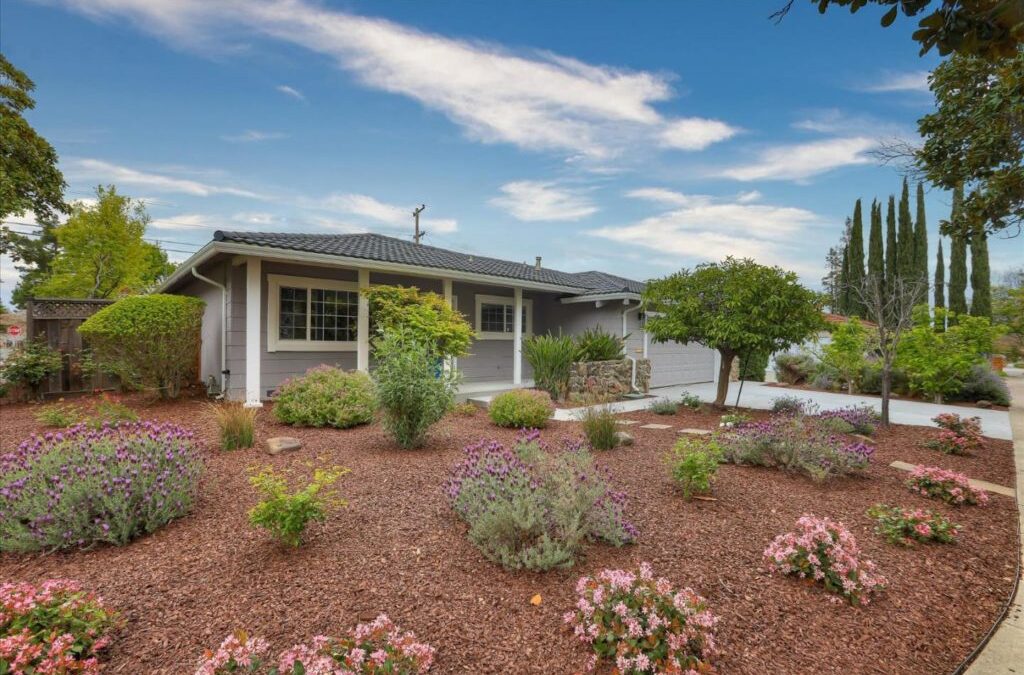
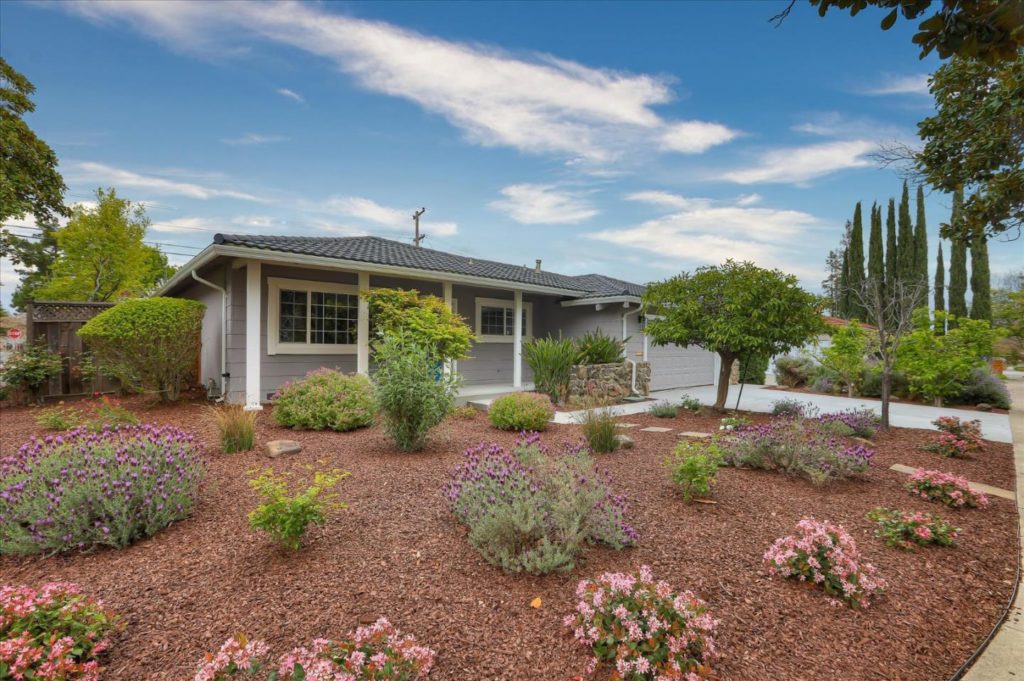
Just helped my clients find this beautiful, updated home on the border of San Jose and Saratoga! After downsizing from a tri-level home near Lynbrook High, this home was absolutely perfect for them. Not only do they love their new house, the backyard is fabulous – very private, tons of fruit trees and plenty of room to relax and enjoy!️

If you are curious to see my other listings in the Silicon Valley, feel free to check them out here!
Carpet absorbs sound, is soft, slip-resistant and often quite beautiful. These qualities make it a common choice as a floor covering for homes and office spaces alike. But, as with any product, various impacts can occur throughout a carpet’s life cycle. Health and environmental concerns associated with carpet include indoor air quality, chemical emissions from manufacturing and disposal operations and solid waste impacts.
Over four billion pounds of carpet enter the solid waste stream in the United States every year. This accounts for more than one percent by weight and about two percent by volume of all municipal solid waste (MSW).
Furthermore, the bulky nature of carpet creates collection and handling problems for solid waste operations. In addition, the variety of materials present in carpet makes it extremely difficult to recycle. By considering a variety of attributes, the Guides for the Use of Environmental Marketing Claims bring attention to the materials used to manufacture and install carpet as well as recycling and disposal issues so that purchasers can make informed decisions about environmentally preferable carpet.
Read the EPA’s advise here: https://www.epa.gov/greenerproducts/identifying-greener-carpet
You want to live a simpler life, I know. That’s why you’re here, right? To create a life of simplicity, contentment and optimism.
But can I tell you something? Your life will not change and you will not be able to create that life you want unless you take action.
Take action. And take it today.
I want to make it easier for you to take action and move ahead on your journey to a simpler life. So all you have to do is set aside some time – anywhere between 10 minutes and an hour to tackle one of the 21 simple actions below.
Just one is enough.
More is better, but one is enough to start living a simpler life today.
You just have to take action.
This is hands-down the best way to tidy and declutter a space in a short period of time. You can apply it to just one room at a time (strongly recommended), or if you’re feeling ambitious or particularly over-run with clutter – tackle all the main areas of the home.
Whatever you choose – speed is the key here.
How to clutter-bust your home:
Recent studies have shown that those of us who are regularly grateful for the good in our lives are likely to be more physically active, feel more content in our day-to-day lives and suffer less health problems.
Sound good?
How to Practice Gratitude and Reap the Benefits:
Once a week, spend ten minutes writing down 5-10 people/acts/events/things you are grateful for. Just one sentence per entry is enough.
That’s it. Just ten minutes a week will leave a truly positive impact on your happiness and well being.
Is That All? Ten Minutes a Week? What if I Do More? Will I Be Happier?
The Gratitude studies have shown that over-doing the gratitude journalling may have the opposite effect. Over time we become immune to the feeling of well-being gained through gratitude and lose the positive benefit.
However, I personally tend to think it would take a lot to over-do this. I can see no harm in thinking on the positives each morning or as you go to bed at night.
I’m not entirely sure when “living room” came to mean “room where we watch television”, but that seems to be the purpose of most living rooms in most homes.
But really, you want the living room to function in a number of ways, not only as a space to watch television.
In fact, you really should take the emphasis of the room away from mindless television viewing and instead encourage lingering conversations, nights spent reading books and listening to music.
How to Reclaim Your Living Room for Living:
Indoor plants help detoxify the air inside our homes, by filtering the airborne toxins and fumes through the soil. They also help provide a point of calm and have been shown to improve productivity.
Some plants that are particularly good for the air inside your home:
Getting the most from your indoor plants:
Leave your new plants in their plastic pots and simply place them in a decorative pot. This means you’re able to change out your plants and pots without having to re-pot every time.
Spend some time being kind to your new plants, watering and feeding them well for the first few months. Slowly ease back on the TLC, allowing the plant to “harden off” and acclimatize to its new environment.
Clean the leaves of your plants regularly by simply wiping over the leaves with a clean, damp cloth.
Apply a slow release fertilizer every six months – in spring and autumn.
Pay attention to the changing watering needs. In summer, the plants will need watering 2-3 times a week, while in winter, this will drop back to once every 2-3 weeks.
Clutter attracts clutter, so a dining table with knick knacks, papers or craft items permanently scattered across it will be far more likely to end up as a catch-all for incoming mail, handbags, etc. AKA A Clutter Magnet.
If you desperately need something to decorate the space try one (and only one!) of the following:
Even on random Tuesday nights.
What good do these items do, what joy do they bring if you keep them locked away in a cabinet to be used for special occasions only?
What’s more special than making memories with your family or friends – each and every night?
The Benefit of Using the Good Tableware:
White space allows us to highlight items of beauty and meaning. Items that are special to us. Items that we are choosing to surround ourselves with.
White space is so incredibly important in creating a slow home and a simple life.
Create white space in your home:
Preparation is half the battle in getting organised, so make your mornings easier – regardless of what they entail – by preparing yourself the night before:
Keep your kitchen as clutter-free as possible by keeping the benchtops clear of appliances.
Find a place in your cupboards for the kettle, toaster, blender and any other appliances that currently reside on the benchtop. It takes approximately 6 seconds to put these back after use and your kitchen will be so much easier on the eye and far less likely to become cluttered.
This one change will keep your pantry tidy and uncluttered – meaning you’re far less likely to waste food and far more likely to keep the pantry organised.
All you need is one or two shelves elsewhere in your house. Consider using a cupboard in the laundry or a shelf in the linen closet – providing it’s easy to access and out of view, anywhere will work.
Use this space to store extra flour, breakfast cereals, sugar, pasta, pasta sauce, tinned tomatoes and beans, rice, quinoa, long-life milk, stocks etc.
The benefits of having secondary storage:
{Thanks to Corbett Barr for the inspiration for this post’s format. You can see his post 21 Quick Actions You Can Do Today to Set Your Blog Up for Massive Success here and the original post from Adam Baker, 24 Quick Actions You Can Do Today That Can Change Your Financial Life Forever}

Creating a greener and safer life for you and your family should be simple. It should be easy to find environmentally sustainable products that offer exactly what you want – and nothing you don’t.
Natura Waterborne Interior Paint continues Benjamin Moore’s commitment to providing the most environmentally friendly paint. Natura goes beyond zero VOC to offer zero emissions and no harsh fumes, making it a safer paint for your family and the environment, all without compromise to performance or color selection. Natura is truly “Green Without Compromise®.”
Click here to learn more.
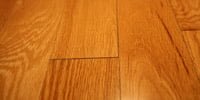
Using a sustainable flooring option won’t deplete our natural resources — there are many gorgeous options to choose from:
If you’re under the impression that environmentally friendly flooring products, such as bamboo and cork, are nothing more than the latest fad that will soon disappear, then think again. Though very different from each other, both are high quality products that make beautiful and durable floors. In addition, bamboo and cork are easy to install and cost about the same as traditional hardwood.
Simply put, sustainable flooring is a material that doesn’t deplete natural resources when harvested. In fact, both bamboo and cork regenerate themselves and can be maintained indefinitely. Below is a comparison on how each is grown and harvested.

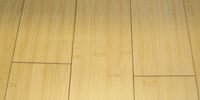
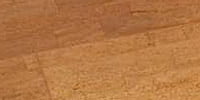
While sustainability is important, a product has to perform well to be a viable alternative. Fortunately, both bamboo and cork have a lot going for them.
Click here for full article and photos.
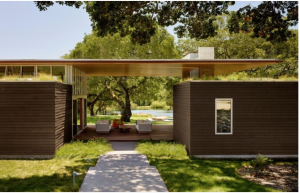
Home » Modern House Designs » Mature Oaks and Living Roof contribute to Passive Energy Home
Mature Oaks and Living Roof contribute to Passive Energy Home
There is nothing better than deciduous trees to create passive cooling in the summer via the shade of leaves and passive heating in the winter via the lack of leaves, and since mature oak trees have huge leaves they rank among the best passive energy deciduous trees that mother nature has to offer. Mother nature has also given us other ways to make use of passive energy for our homes and with all the advances in building technologies, one of the best examples of this is the use of a living roof for heat dispersal in the summer and heat retention in the winter, with the bonus of adding another place to plant grass, herbs, sedums or even small rooted vegetables.
Turnbull Griffin Haesloop Architects made use of these passive energy tricks when designing Sonoma Residence, located in Sonoma, California, on a gently sloping meadow that softly descends down to a spring fed pond.
Turnbull Griffin Haesloop Architects made use of these passive energy tricks when designing Sonoma Residence, located in Sonoma, California, on a gently sloping meadow that softly descends down to a spring fed pond.
The criteria for Sonoma Residence was for a home that embraced an indoor / outdoor lifestyle so that their guests could easily transition from the home to the pool to the pond, and since many days in Sonoma can be very hot, Turnbull Griffin Haesloop Architects included a large shady outdoor sitting area underneath an expanded roofline.
A similar design detail is used in the living room where the wood stove is positioned in front of another cement wall. Other passive heat details are the ceiling fan above that sends the rising heat back down to the living level and photovoltaic powered electric heat pumps that provide hot water for in-slab radiant floor heat.
The kitchen is at right angles to the concrete wall and is positioned under a more intimate ceiling height. Wrapped in Douglas-fir, the kitchen embodies a warm and elegant aesthetic that is factually enhanced by the living roof above.
The taller ceiling in the living room is wrapped in clerestory windows that make the bridged roof outside appear to float. Large expanses of operable glazings slide and stack out of the way so that on a sunny day the journey to and from the outdoor zones is effortless.
The pool is heated with solar hot water panels while the poolside dining area is cooled with large shade trellises.
The pool house features a large drum shaped architectural feature that holds an outdoor fire pit.
The drum shaped detail makes a fun statement inside the pool house playroom. This second building also contains changing rooms, a guest room and a utility room that holds the solar hot water and pool equipment.
Further down the slope is a cozy metal fire pit and a small dock that holds a kayak and a zodiac.
A Jacuzzi is located just outside one of the bedrooms which is positioned under one of the two living roofs.
One of the bathrooms is designed with an indoor entrance on one end and an outdoor entrance on the other. Here, as in the kitchen, the millwork is all Douglas-fir.
Sonoma Residence is designed to be a net zero house and doesn’t require the use of air conditioning to keep the home comfortable in the summer.
Turnbull Griffin Haesloop Architects
Passive heating and cooling designs are becoming more and more popular, with some architects even using a rammed earth wall for passive temperature control.
Click here for full article and photos: